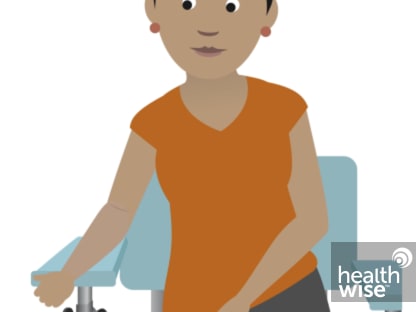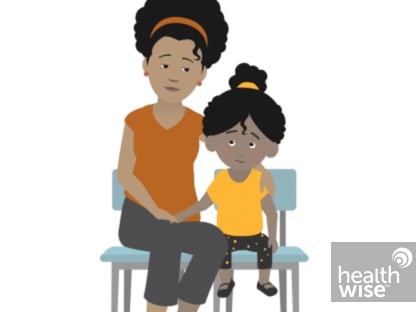Our Health Library information does not replace the advice of a doctor. Please be advised that this information is made available to assist our patients to learn more about their health. Our providers may not see and/or treat all topics found herein.
HIV Viral Load Test
Test Overview
A viral load test measures how much HIV is in the blood. It's first measured when you're diagnosed with HIV. This serves as the baseline. Future measurements are compared with it. With treatment, the viral load should go down. Within a few months, there should be very little virus in your blood.
Why It Is Done
A viral load test is done to watch for changes in an HIV infection. Your doctor uses it to see how well your treatment is working. This information helps guide your treatment options.
A goal of treatment is to reach an undetectable viral load. This means that the amount of the virus is too low for the test to detect. When the virus is undetectable, you cannot pass HIV to other people through sex.
How To Prepare
In general, there's nothing you have to do before this test, unless your doctor tells you to.
How It Is Done
A health professional uses a needle to take a blood sample, usually from the arm.
Watch
How It Feels
When a blood sample is taken, you may feel nothing at all from the needle. Or you might feel a quick sting or pinch.
Risks
There is very little chance of having a problem from this test. When a blood sample is taken, a small bruise may form at the site.
Results
Each lab has a different range for what's normal. Your lab report should show the range that your lab uses for each test.
Viral load results are reported as the number of HIV copies in a milliliter (copies/mL) of blood. Each virus is called a "copy," because HIV reproduces by making copies of itself (replicating).
Normal: | HIV is not detected (undetectable) in the blood. |
|---|---|
Abnormal: | HIV is detected in the blood. Your doctor will compare your current measurement with previous values. |
If the viral load drops, it means that the infection is being suppressed or controlled.
If no HIV copies are found, this does not mean that you don't have HIV anymore. It means that the amount of HIV in the blood was too low for the test to detect.
Related Information
Credits
Current as of: September 25, 2025
Author: Ignite Healthwise, LLC Staff
Clinical Review Board
All Ignite Healthwise, LLC education is reviewed by a team that includes physicians, nurses, advanced practitioners, registered dieticians, and other healthcare professionals.
Current as of: September 25, 2025
Author: Ignite Healthwise, LLC Staff
Clinical Review Board
All Ignite Healthwise, LLC education is reviewed by a team that includes physicians, nurses, advanced practitioners, registered dieticians, and other healthcare professionals.
This information does not replace the advice of a doctor. Ignite Healthwise, LLC disclaims any warranty or liability for your use of this information. Your use of this information means that you agree to the Terms of Use and Privacy Policy. Learn how we develop our content.
To learn more about Ignite Healthwise, LLC, visit webmdignite.com.
© 2024-2025 Ignite Healthwise, LLC.







